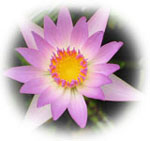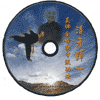|
|||||||
|
|
|||||||
| Grand Master | Lotus Light Charity Society | Lotus Light Lei Zang Si Temple | Golden Mother Yoga | Chinese Version | |||
| News Focus | ||||||||
| Introduction | ||||||||
| Activities & Notice | ||||||||
| Benefits | ||||||||
| Latest Class | ||||||||
| Beginner Class | ||||||||
| Intermediate Class | ||||||||
| Advanced Class | ||||||||
 |
||||||||
|
|
||||||||
|
||||||||
Golden Mother Yoga - Intermediate Class - 5. Golden Child Six Harmonies
Golden Child Six Harmonies
 |
| Trial【28.8, 56K】; Download |
This style is named the “Golden Child Six Harmonies” because the movements simulate a child’s playful behavior. The “six harmonies” refers to the different directional movements and the turns conducted in the exercise. This style is designed to help you to generate chi in your energy centers and help you to gain the stillness and the stability with your chi inside your body. In Taoism, the “six harmonies” represents “balance” and “unity” between the energy of the universe and the energy of one’s physical body. When the energy of the yin and the yang are well balanced in the six harmonies, you will be blessed with pure, soothing energy which will never be disturbed by anything.
The word “yoga” means personal response. You are training your inner body and your outer physical body to be responsive with you. As you progress in your practice, you will attain self unity with your body, and as you continue your practice, in time you will attain unity with your inner self and the boundless universe around you.
Part One: The Golden Child Adores the Flowers
Starting position: Sit on the floor with your legs out in front of you. Keep your back straight, your head erect, and your shoulders straight and relaxed. With your palms facing up, put one hand on top of the other and rest them in front of your dan-tien.
- Straighten your right leg out to the side
as you bend your left knee and place the sole of the left foot
against the inside of the right thigh. Inhale deeply into your
dan-tien, your hands resting in front of it.
- Relax your body. Inhale as you slowly
move your hands out to the sides and smoothly bring them up above
your head. Then, exhale slowly as you cross your wrists and turn
the backs of your hands to face outward. Inhale again, chi to
dan-tien, and hold your breath. Your body remains still. Use the
power in your waist to slowly turn your body to the right as far
as you can, your eyes and your head moving in the same direction
as your body. Hold in this position for 3 seconds. Then turn your
body to the left as far as you can, again your eyes and your head
following the same direction as your body. Hold this position for
3 seconds. Return back to the center position and exhale. Repeat 2
more times.
- Repeat steps 1 and 2 with your left leg
straightened out, doing the movements three times.
NOTE:
- Hold your breath as your body is turning;
exhale when your body stops moving.
Part Two: The Golden Child Watches the Clouds
- Bend your right leg to the outside, with
your right heel just to the outside of your right hip, your toes
pointing away from you. Bend your left leg inward and place the
sole of the left foot against the inside of the right thigh,
forming a triangle.
- Place your hands behind your head with
the fingers interlocked. Your shoulders should be back, and your
elbows should be pointing out to the sides. Inhale deeply, chi to
dan-tien, and hold your breath. Use the power in your waist to
turn your body to the right as far as you can, and then lift your
chin up and look up to the right. Your left elbow should be
pointing down to the ground and your right elbow should be
pointing up. The right side of the upper body stretches up in the
same direction as your right elbow, and the upper body should be
tilted at a 45-degree angle. Hold this position for 3 seconds, and
then exhale. Inhale deeply again, hold your breath, then turn your
body to the left as far as you can, then back to the starting
position and exhale. Relax your body. Repeat these movements 2
more times.
- Repeat steps 1 and 2 with your left side,
doing the movements three times.
Part Three: The Golden Child Carries the Flower Basket
Starting position: Same as above, “Part 2: The Golden Child Watches the Clouds”
- Rest your right leg on the ground in the
“inward triangle” formation, your left knee is on the ground with
your left leg positioned to the outside in a V-formation. With
your left hand, pull your left foot towards the left side of your
body as close as possible with your left hand. Lift your right
hand above your head with the back of your hand facing up. Close
the hand to form a fist (fist faces down), then turn your head to
the left and look far away. (This is called the “pulling
movement.”)
- Keeping your left knee on the floor,
release the tension in your right leg by extending your left arm
out to the side away from your body, at the same time turning your
right fist over, which is directly above your head. As you exhale,
open the fist and move your arm across to the right side of your
head, at the same time turning your head and looking up to the
left. (This is called the “opening movement.” ) When your hand is
positioned beside your head, your leg is relaxed and positioned
away from the side of your body. Your hand and foot movements
should be coordinated with each other.
- Turn your right hand down and form a
fist. Inhale, hold your breath, pull in your left leg, turn your
right hand over and do the opening movement, look away, and
exhale. The hand movements are subtle in this exercise.
- Place your right hand lightly on top of
your left shoulder. Grasp the toes of your left foot with your
left hand, then bring your foot from the side to the front of your
chest and stretch it straight out to the front. Then, bring your
left foot down to the ground behind your right foot and rest both
hands on your thighs by the knees (the right hand on the right
thigh, the left hand on the left thigh). Then, place your right
hand on your right knee. Relax, letting the chi return to your
dan-tien.
Edited by Reverend Lian Deng
|
Copyright (c)2003 Lotus Light Charity Society. All Rights Reserved. |


